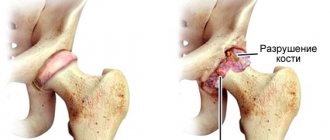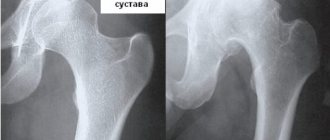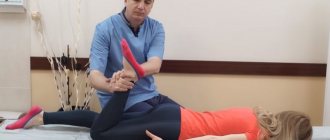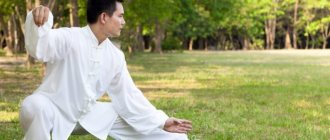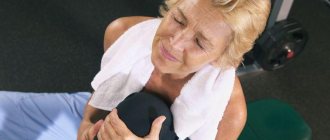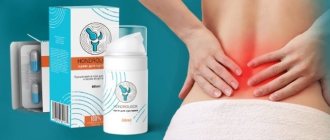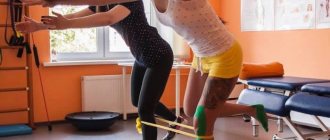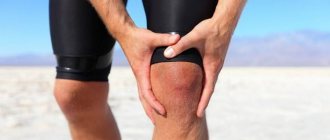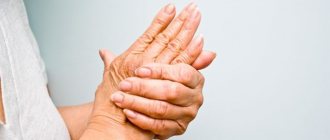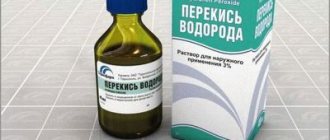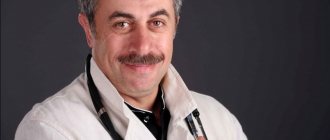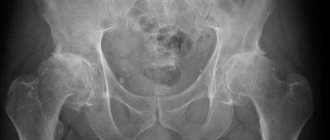For the comprehensive treatment of joint diseases and recovery after operations on the musculoskeletal system, therapeutic exercises play a vital role. One of the successful author’s methods of physical exercise is the work of Pavel Valerievich Evdokimenko. He developed complexes of exercises for lesions of all major joints. But the doctor’s main merit is that Pavel Valerievich did not stop working after receiving worldwide recognition, but continues to actively participate in the recovery of patients suffering from pathologies of the musculoskeletal system. The doctor’s biography says that the future specialist initially received a paramedic diploma in 1984 and worked in this position for a long time. Only 10 years later Pavel Valerievich received higher education.
In addition to his medical activities, Dr. Evdokimenko has established himself as a talented writer, explaining in detail and clearly to patients how to overcome the disease as quickly as possible. More than 10 books by the author have been published in multi-million copies , which quickly find their readers. In them, he describes not only gymnastic exercises to relieve joint pain, but also shares the secrets of prolonging active life. Patient reviews of Pavel Valerievich are always positive, emotional, indicating the practical benefits of his recommendations.
Doctor Evdokimenko – official website
Pavel Valerievich’s work is widely presented in the public domain on the Internet. The doctor’s official website (https://www.evdokimenko.ru/) is dedicated not only to joint problems and therapeutic exercises. It examines broader issues of nutritional characteristics in various diseases, with attention paid to cardiovascular pathology. On the Internet portal of Dr. Evdokimenko you can find the following information:
- doctor's biography;
- address and visiting hours of the clinic where he works;
- excerpts from books;
- main types of therapeutic exercises for various joint lesions;
- many interesting videos on medical topics;
- doctor's opinion about cholesterol;
- ways to maintain a healthy lifestyle.
Each issue is covered quite widely, examples from the practice of Pavel Valerievich are given. The site contains links to the Smart Medicine channel, hosted by Dr. Evdokimenko. He has his permanent address on YouTube. The doctor talks about new work in the field of therapeutic gymnastics and raises issues of longevity.
The specialist’s opinion on high cholesterol is quite controversial, as he suggests refusing to take statins recommended by WHO. These are drugs that lower cholesterol and help remodel the heart affected by atherosclerosis. At a minimum, you should carefully read the opinion of a respected academician who proposes to combat hyperlipidemia with lifestyle changes and nutrition. A separate page of the site - diet for arthrosis, talks about the peculiarities of food consumption when the musculoskeletal system is damaged.
Nature of pain
Understanding the nature of pain and the ability to describe it will be useful to everyone, since the quality and speed of diagnosis depends on this. Often, just by the characteristics of the sensations, the doctor can assume the presence of one or another pathology. The pain may be:
- acute: occurs abruptly and, often unexpectedly, usually has a shooting character and has high intensity; often occurs against the background of injury, pinching of the intervertebral nerve;
- aching: the intensity of the sensations is low, often they are of a pulling nature; the symptom often accompanies chronic diseases (arthrosis) and inflammatory processes (arthritis, bursitis, glenohumeral periarthritis, etc.) during the recovery period;
- associated with movement: characteristic of most pathologies of the shoulder joint and surrounding muscles; It is important to note which movements cause increased pain, as this helps to make the correct diagnosis;
- reflected: the epicenter of sensations is not located in the shoulder area, a wave of pain also affects this area; the symptom is characteristic of cardiovascular pathology: angina pectoris, myocardial infarction, as well as cholelithiasis, pleurisy, pancreatitis;
- shooting, pulsating: sharp pain impulses are characteristic of damage to the spinal roots, muscle spasms, etc.;
- constant: sensations do not go away either day or night, while movements can intensify them; characteristic of inflammatory processes.
In addition to describing the nature of the pain, it is important to tell the doctor about the accompanying sensations. Thus, nerve damage is often accompanied by burning and tingling, loss of sensitivity, etc.
Doctor Evdokimenko – books
12 full-length books by the author have already been published. The chapters of each of them can be read on the official website, but you will not be able to download them completely. However, there is a list of online stores where all the doctor’s publications can be freely purchased with delivery worldwide. All of Evdokimenko’s books are discussed below in the order of their publication.
- "Back and neck pain". The book was written in 2001, but with the same title was released 8 years later. The publication talks about ways to get rid of pain due to osteochondrosis.
- "Arthrosis". The publication was published in 2003, the main topic is the fight against arthrosis, the most common joint problem.
- "Arthritis". A book similar to the previous one is devoted to arthritis and inflammatory processes in the joints. Released in the same 2003.
- "The Cause of Your Illness". 2003 turned out to be a very creative year for the author. And this book, dedicated to the role of stress in the development of diseases, reached readers in the same year. The publication examines specific stories of people with an assessment of the development of their diseases by Pavel Evdokimenko.
- "Pain in legs" . This work was published in 2004. The book covers issues of differential diagnosis and treatment of diseases of the lower extremities accompanied by pain.
- "Pain and numbness in the hands". Written in the same 2004 as the previous edition. The essence of the book is an explanation of what to do for a patient who feels pain in his arms and shoulders.
- "If my knees hurt. Healing gymnastics" . The publication was released 7 years after the author’s last work. The title clearly reflects the essence of what is presented in the book.
- “ Osteoarthritis of the hip joints . Healing gymnastics" . It was released in 2011, and the title characterizes the theme of the story.
- "The Big Book of Health by Doctor Evdokimenko". This is a combined edition that includes all the listed books published before 2012.
Three more books found their readers in 2014-2015. These are “The Secret Formula of Health”, “Being Healthy in Our Country”, as well as “Anatomy of Luck: The Principle of the Umbilical Cord”, chapters of which can be read on the official website. The author considers these works to be the most successful, since they cover the most important issues of health, luck, and give the reader the opportunity to avoid encounters with scammers in medicine.
Dr. Evdokimenko runs his own official channel on YouTube video hosting. It's called Smart Medicine. The channel talks about all the news in the doctor’s work, and also publishes materials about his practical activities.
Indications
The shoulder is the most mobile joint. This is one of the reasons that he is susceptible to injury and various diseases. Many of them are treated by arthroscopy.
The main indications for arthroscopic shoulder surgery are:
- consequences of injuries;
- damage to the articular surface;
- osteoarthritis;
- tendinitis of the long head of the biceps;
- separation of the articular lip of the scapula;
- the appearance of intra-articular bodies;
- ligament or tendon ruptures;
- habitual dislocation;
- rotator cuff injury.
Arthroscopy is performed when shoulder pain or limited mobility of unknown origin occurs. In this case, the operation is diagnostic. If the source of the problem is identified, it can be immediately treated.
Clinic of Dr. Evdokimenko
Pavel Valerievich is engaged in practical medicine. This means that in the clinic he conducts appointments and performs medical procedures for various diseases. His advice is practical in nature, aimed at speedy recovery of the patient with minimal use of medications. The doctor promotes the principle of “reasonable medicine,” which means treating diseases by changing lifestyle, nutrition, and using physical recovery methods.
One of the drugs promoted by the doctor is Arthropant. This is a remedy containing small doses of chondroprotectors in combination with camphor, which produces a distracting effect. Arthropant is not an official drug. Pavel Valerievich talks to all patients suffering from joint pathology and who are overweight about losing weight as the most important part of treatment tactics. By following the recommendations of the academician, the patient in most cases receives relief from suffering. The doctor does not take on neglected patients, for example, those suffering from grade 3-4 scoliosis. The specialist is confident that in such situations only prompt correction will help.
Dr. Evdokimenko - exercises
The academician has developed therapeutic exercises covering almost all parts of the musculoskeletal system. It includes classes for the following types of pathology:
- diseases of the spine;
- shoulder girdle problems;
- osteochondrosis;
- coxarthrosis;
- gonarthrosis;
- arthrosis and arthritis of small joints;
- systemic diseases, including rheumatoid arthritis, ankylosing spondylitis;
- obesity and cardiovascular disorders.
For business people who cannot afford full-fledged exercises at home, the doctor has developed office gymnastics. It is not a replacement for standard exercises, but it can alleviate the course of many diseases of the musculoskeletal system. The second purpose of office gymnastics is to improve blood circulation in the joints. This allows you to protect even healthy joints from oxygen starvation.
Gymnastics for the shoulder joint
The pathology of the upper limb girdle area includes many diseases, but the main ones among them are two – arthropathy of the shoulder joint and periarthritis with the spread of the inflammatory process to the scapula. For deforming arthrosis, surgical treatment comes to the fore, and for inflammatory diseases, taking medications and physical therapy. Below are the main exercises proposed by Dr. Evdokimenko for glenohumeral periarthritis and arthrosis of the shoulder joint:
- circular movements of the shoulders . Starting position: sitting on a hard surface. The arms are spread out and the palms are wrapped around the waist. The essence of the exercise is to make circular movements in the shoulder joint without lifting your upper limbs for at least 2 minutes;
- shoulders forward . Starting position - as in the previous exercise. The essence of the exercise is to move your shoulders back and forth without taking your hands off your waist. Duration of training – 5 minutes;
- elbow movements . The starting position is sitting, the palm of the right hand is located on the left shoulder, and the elbow is directed downward at an acute angle. The essence of the training is to pull the opposite elbow with your free upper limb, which you need to hold and not tear off from your shoulder. This puts pressure on the shoulder joint. This should be done at least 5 times on each side;
- arm tension . Starting position: lying on the bed, arm hanging down. The essence of the exercise is to raise the upper limb and tense the muscles, hold it in this position for as long as possible, then lower it. Repeat with the second hand. Number of repetitions – up to 10 per day;
- movement towards the goal . Performed standing facing the wall. It is necessary to raise the affected arm as high as possible. Then mark a point a few centimeters higher and try to reach it by slowly but constantly moving your fingers upward.
Physical exercises with damage to the upper shoulder girdle help restore range of motion and help relieve painful symptoms.
Habitual dislocation
The most common indication for shoulder arthroscopy remains instability of the joint. The shoulder has a high range of motion. This is due to the fact that the articular surface of the scapula is flat and not concave. Movement is limited only to the lip, which has a cartilaginous structure. Undoubtedly, freedom of movement is an advantage, but it also carries certain disadvantages. The shoulder is quite easy to dislocate. And in the absence of adequate treatment, dislocations recur and degenerative changes in the joint progress.
The indication for arthroscopy is not only habitual dislocation, but also its first episode, if the patient’s age is less than 30 years. This is due to the fact that relapses occur much more often in younger people. If in elderly patients the risk of recurrent dislocation is only 2-3%, then in patients under 30 years of age it reaches 38%.
When the shoulder is injured, the cartilaginous labrum is often injured. As a result, joint stability is lost. Its loss is also associated with a defect in the bony component of the scapula (glenoid).
Gymnastics for knee joints
The exercises developed by Dr. Evdokimenko can help the patient’s recovery after various knee injuries and increase the range of motion during gonarthrosis. Current exercises:
- leg lift . The initial position is lying on a hard surface. Arms along the body, and legs fully extended at the knee joint. Therapeutic training consists of raising the straightened leg 10-15 cm from the floor and holding it in this position using muscle strength. Lesson duration – up to 10 repetitions;
- raising a bent leg . The essence of the exercise is the same as the previous workout. First bend your leg at the knee joint and lift it at an angle of 90 degrees. You need to hold for at least 1 minute or longer. No more than 5 repetitions are required per day;
- leg spread . Starting position: lying on a hard surface on your stomach. It is necessary to raise both straightened legs, and in the air slowly try to spread them in different directions. Then return to the starting position. Number of repetitions – no more than 10;
- sitting leg raise . The starting position is on a chair in a sitting position. Legs are down. It is necessary to straighten the lower limb at the knee joint and raise it to the maximum possible height. Hold for at least 1 minute and then return to the starting position. Number of repetitions – at least 10 per day;
- lifting on your toes . Starting position - standing on a hard surface, hands resting on a chair located in front. Using the efforts of your arms and calf muscles, you need to rise onto your toes and then lower yourself. Repeat at least 15 times at a slow pace.
If your knees ache, then all 16 exercises of Dr. Evdokimenko are described in detail on the official website and in printed publications. However, even using the 5 most important ones will facilitate the patient’s motor activity.
Exercises for the hip joints
The two main causes of damage to the hip joint - coxarthrosis and trauma - did not go unnoticed by Pavel Valerievich. He developed therapeutic exercises that stabilize the condition of the osteochondral system and strengthen the muscles. Below is a set of exercises by Dr. Evdokimenko:
- leg lifts . The initial position is on the stomach, legs straightened at the knee joints. The essence of the exercise is to raise the straightened lower limb to a height of up to 40 cm and slowly lower it back. It is necessary to alternate the legs used. Number of repetitions – up to 15 per day;
- pelvic lift . The initial position is on your back, legs extended as far as possible, arms along the body. It is necessary, by tensing the muscles of the shoulder girdle and hips, to raise the pelvis to a height of up to 30 cm and hold it in this position for up to 60 seconds. The exercise is also useful for the arms, since several muscle groups are involved in it. Repeat up to 5 times a day, dynamically;
- reach the foot . The initial position is sitting on a hard surface, legs straightened. The essence of the training is to try to reach the tips of your toes without straightening them. At first it is quite difficult to perform, but gradually the muscles will become stronger and the range of movements will increase. Duration of classes - at least 15 minutes;
- knee grab. Initially, you should sit on a hard surface. One leg is straightened and the other is bent at the knee. The essence of the training is to grab your knee with your hands and try to pull it towards your body as far as possible. Then fix it for 40-50 seconds and return to the starting position. Repeat at least 5 times a day;
- thigh massage . The exercise is performed at the end of the entire set of classes. Its essence is to massage the outer surface of the thigh in the direction of lymph drainage (up). 3-5 minutes of active rubbing are enough to stabilize blood flow in the hip joint area.
Exercises for hip pathology are best combined with exercises for the neck. This will help fight osteochondrosis of the spine and strengthen the joint.
Diagnostics
To determine the reason why a person has shoulder pain, the doctor uses the following methods:
- survey: identifying the nature and intensity of pain, the circumstances of its occurrence, the presence of concomitant diseases, etc.;
- examination: the doctor assesses the range of motion in the joint, the color and temperature of the skin, the presence of swelling, limitations in movement, etc.; a neurologist evaluates tissue sensitivity, muscle strength, and quality of reflexes;
- X-ray and CT: pictures and tomograms make it possible to assess the condition of bone tissue and partly cartilage; this is an indispensable method for diagnosing arthrosis, dislocations, cracks and fractures of bones, osteochondrosis of the spine;
- MRI: magnetic resonance imaging allows you to see the condition of not only bones, but also soft tissues, making virtual sections in specified planes;
- Ultrasound: ultrasound examination of the shoulder joint area allows you to see foci of inflammation, accumulation of fluid in the joint capsule, abscesses and neoplasms;
- laboratory diagnostics: a general blood test provides information about the presence of inflammation or allergies; if rheumatoid arthritis is suspected, a test for C-reactive protein, etc. is taken;
- joint puncture: a diagnostic puncture of the joint capsule, through which an analysis of the synovial fluid is taken or arthroscopy is performed (inspection of the joint from the inside using a miniature camera);
- electromyography: assessment of the efficiency of muscle fibers.
If necessary, consultations with narrow specialists and additional examination methods are prescribed: electrocardiogram, ultrasound of the abdominal organs, etc.
Dr. Evdokimenko – coxarthrosis
Being a rheumatologist, Pavel Valerievich deals not only with physical methods of treating hip joint pathology. For different stages of the disease, the doctor recommends individual treatment methods, which are presented in the table below.
| Type of pathology/treatment methods | Drugs | Surgical methods | Adjuvant Treatments |
| Coxarthrosis 1st degree | Chondroprotectors – glucosamine and (or) chondroitin | Not applicable | Physiotherapy: DDT, ultrasound, therapeutic exercises |
| Coxarthrosis 2nd degree | Light NSAIDs: nimesulide, aceclofenac, muscle relaxants, chondroprotectors | Administration of hormones and chondroprotectors to the joint, sometimes endoprosthesis replacement in a bilateral process | Physiotherapy: ultrasound, electrophoresis, amplipulse, physical therapy |
| Coxarthrosis grade 3 | Any NSAIDs plus analgesics if necessary, muscle relaxants | Endoprosthetics without alternative | Therapeutic exercises as preoperative preparation |
| Complete ankylosis of the joint | The whole range of funds | Endoprosthetics is the only option for radical correction | Light physical exercises for rehabilitation in the postoperative period |
Gymnastics for the treatment of hip joint pathology is used for any degree of coxarthrosis. However, it brings optimal therapeutic results only at the very beginning of dystrophic changes. In advanced stages, with bilateral lesions, Dr. Evdokimenko recommends surgical tactics as the basis for quickly improving the quality of life.
Shoulder – Dr. Evdokimenko
Pathology of the upper limb girdle occurs quite often in the practice of Pavel Valerievich. However, direct deforming arthrosis of the shoulder joint is a rare disease. Therefore, the basis of treatment is predominantly conservative tactics. Complex treatment of the shoulder joint includes:
- NSAIDs to relieve pain and inflammation;
- muscle relaxants to eliminate muscle spasms;
- peripheral vasodilators to improve blood flow in the extremities;
- injection of hormones and chondroprotectors into the joint;
- massage, physiotherapy;
- therapeutic exercises using exercises developed by the doctor.
The prospects for recovery are quite good. With high compliance, it is possible to achieve results within the first week. The full course of therapy, especially physical treatments, is designed for a long period.
Progress of the operation
During the operation, different types of anesthesia may be used. Shoulder arthroscopy is usually performed under general anesthesia. Combined anesthesia can also be used. In this case, doctors administer intravenous superficial anesthesia. Additionally, conduction anesthesia is performed (injection of the brachial plexus with drugs that block the conduction of nerve impulses).
The patient's body position is “beach chair”. Three small incisions are made for access. The location of the damaged labrum is determined using an arthroscope inserted into the joint. It is fixed. The joint capsule is also fixed. The size of the damage to the bony part of the glenoid is assessed. Anchor clamps are installed - from 3 to 5 pieces, based on the extent of the damage.
Almost always such an operation is successful. Relapses are observed only in 4% of cases. Mainly among athletes who continue to engage in contact sports and are at risk of injury. With adequate physical activity, relapse does not occur.
Another treatment problem remains glenoid deficiency. To solve this problem, iliac bone transplantation can be used. But the technique has a number of disadvantages. Two operations are required: one to treat a habitual shoulder dislocation, the other to remove donor material. This is an additional surgical injury and an aesthetic defect. Some patients develop chronic pain syndrome.
A method of replacing bone defects with porous titanium nickelide is also used. The indication is the size of the glenoid defect from 25%. The graft is prepared before the operation. For this purpose, three-dimensional reconstruction is used.
If there is a defect in the head of the humerus (Hill-Sachs injury), it is replaced with fragments of the posterior part of the capsule, the tendon of the infraspinatus muscle. The risk of recurrent shoulder dislocation within 2 years is about 15%.
Dr. Evdokimenko – cervical osteochondrosis
Spinal pathology, although not directly life-threatening, can lead to a serious deterioration in its quality. The spinal roots and vessels supplying the brain are compressed, which leads to the appearance of painful symptoms in the central nervous system and upper extremities. Dr. Evdokimenko rightly believes that osteochondrosis provokes many painful conditions. These include:
- hypertension , as a consequence of the reaction of the nervous system and direct vasospasm;
- back pain in any part, depending on the location of degenerative changes;
- pain and numbness in the hands, as a result of irradiation along the spinal roots;
- leg cramps
- Tunnel syndrome is a pathology of the hands that occurs due to the load on the wrist joint and impaired blood supply to the extremities.
Pathological symptoms are provoked by existing diabetes mellitus or a hernia of the lumbar spine. However, all painful conditions can be treated using comprehensive tactics. Initially, the doctor recommends lifestyle changes with a decrease in caloric intake, taking medications in combination with gymnastics. In the presence of surgical pathology, such as a herniated disc, radical therapy through neurosurgery and exercises for early recovery is recommended.
Doctor Evdokimenko – get an appointment
Where does Pavel Valerievich meet? This question worries many patients suffering from various pathologies of the musculoskeletal system. However, the specialist does not hide his activities, as he is a practicing doctor. The official website contains a list of pathologies for which you should contact Dr. Evdokimenko.
The clinic where the doctor sees is called “Z.O.V.” (an abbreviation for “health is the basis of everything”), is located in Moscow on Leninsky Prospekt. You can make an appointment during business hours by calling the phone number listed on the website. Dr. Evdokimenko works only on a paid basis. The price of the initial visit is 5,000 rubles, the second visit is 20% cheaper. It is advisable to come to your appointment with the available examination results. Dr. Evdokimenko, as a rheumatologist, is interested in photographs of the affected joints, blood tests including acute phase indicators and uric acid. Getting an appointment by appointment is quite simple, and Pavel Valerievich himself will explain in detail how to get rid of the pathology.
general information
The shoulder joint is one of the most mobile in the body. The head of the humerus is spherical in shape, and the corresponding surface of the scapula is almost flat. The structure is additionally fixed by a strong articular capsule, numerous tendons and ligaments. As a result, a person can move his arm in any direction.
The cause of pain can be any of the elements of the joint apparatus, as well as nearby nerve bundles and muscles. The problem can also come from neighboring structures: the spinal column, heart, stomach, esophagus. Often, only a doctor can accurately determine the cause of pain in the shoulder joint of the arm and prescribe the correct treatment.
Make an appointment
